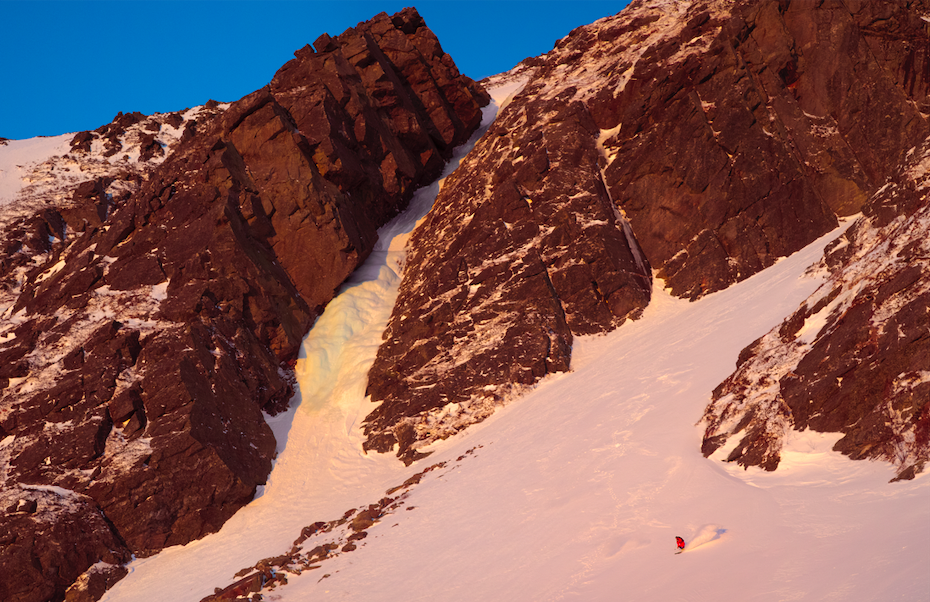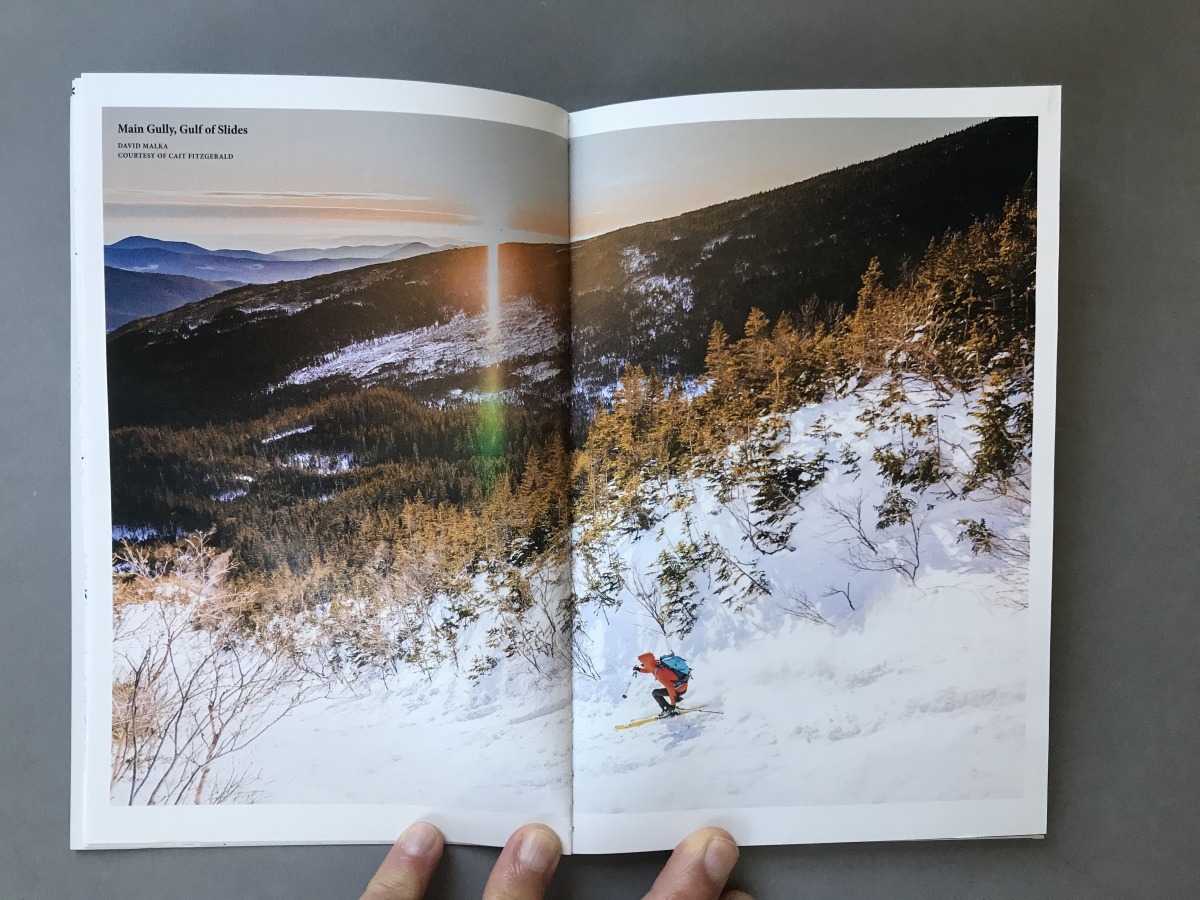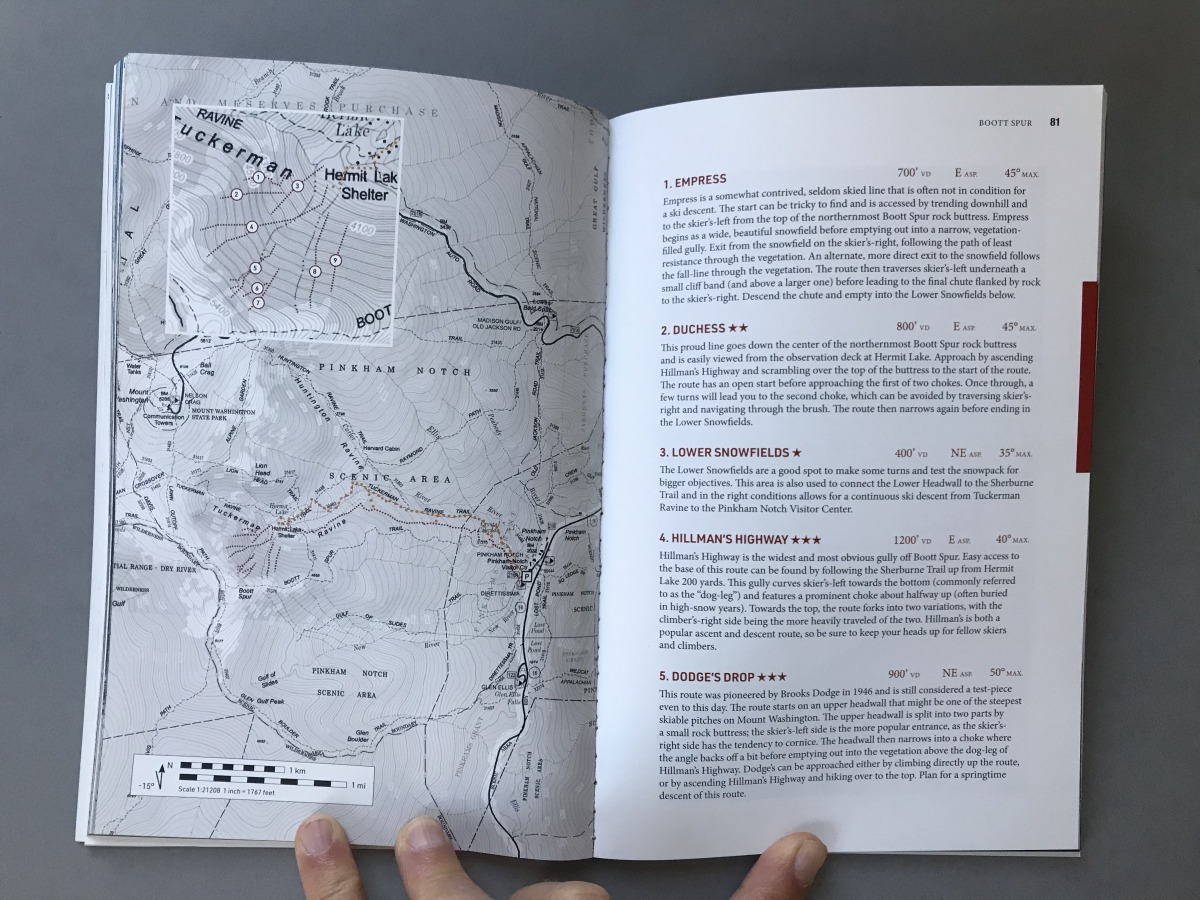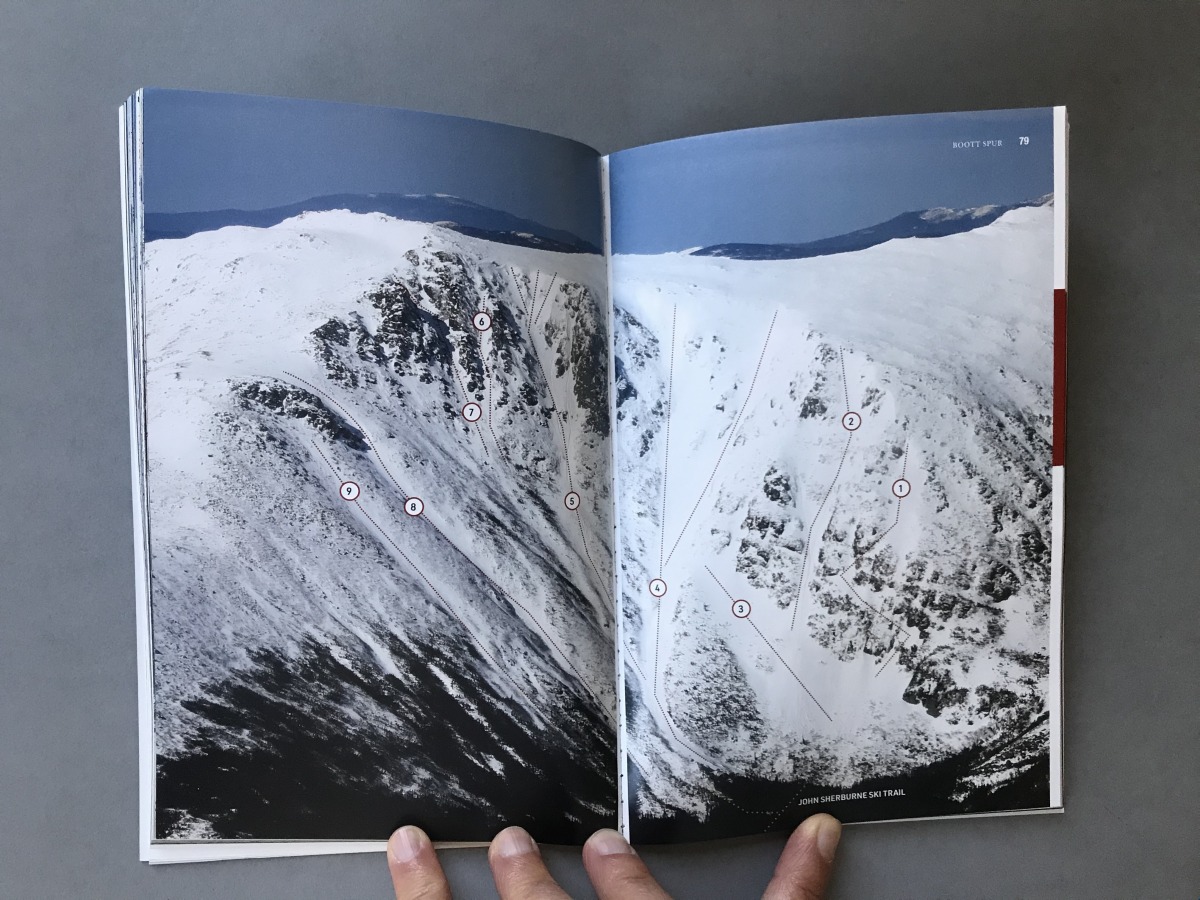
Andrew Drummond descends Huntington Ravine, a better known area in New Hampshire’s Presidential range. Photo: Jamie Walter
I grew up hearing tales of Tuckerman Ravine. Each spring, a group of my extended Pennsylvania snowboarding community would make the pilgrimage north, sights set on carrying their boards to the windy Mount Washington summit and careening down its glacial carved steeps. I never joined (a regret I hope yet to remedy), but recall stories filled with adventure, icy climbs and descents, and healthy doses of partying.
Tuckerman is easily the most infamous of New Hampshire’s Presidential Range (it’s also among the few Northeast US lines included in the 50 Classic Ski Descents lineup) but it’s not the only zone worth skiing there. New Hampshire native Kurt Niiler set out to catalogue the breadth of Presidential Range ski mountaineering options in his new guidebook Presidential Skiing.
I called up Kurt to talk about the mountain range, the guidebook and what skiers should know before taking on the steep cirques, variable snow and the worst recorded weather in the world.
WS: How long have you been backcountry skiing in the Presidential range?
KN: The first time I ever skied Tuckerman Ravine, I was 10 years old. In the Northeast it’s a right of passage. In the spring time like in April you go, hike up with your skis on your back and do a run. I grew up ski racing so was always really busy in the winter but then once I got to be a little older, 18-19 or so, I started getting more interested in the backcountry. And just really curious about what there is beyond Tuckerman. I started spending more time going out there and broadening my own horizons in the range. At this point it’s been probably seven years or so of hitting it hard.
WS: What’s the terrain like out there?
KN: The Presidential Range is definitely the most prominent in the northeast. The entire range is in the alpine zone, which in Northeast standards is roughly 4700 feet. The climate is the real deal despite its low altitude. The whole range is about 20 miles long with nine peaks over 4000 feet. All the good skiing is hosted in glacial cirques.
Tuckerman Ravine is the most famous and well known, but the purpose of this book is to shed light on some of the lesser known ravines. They all host really good steep skiing. Some match in quality to Tuckerman Ravine but just aren’t that well known. I’m guilty of this as well; it’s so easy to just go out and ski on the east side of Mount Washington but there’s a lot more to be done.
WS: What makes this good ski mountaineering terrain?
KN: In the Northeast we’re limited on backcountry areas. It’s pretty heavily vegetated. But the Presidential range is the only area that has this high a concentration of steep snow climbs and things that would be suitable for ski mountaineering.
WS: I’ve heard rumors that the Presidential range has the worst weather in the world…but, how bad is it?
KN: It’s just really erratic. It’s always so windy. There’s definitely ranges that get way more snow and a more developed snowpack. There’s an observatory at the summit of Mount Washington but the weather is ever changing and really hard to nail down the forecast. It’s also a pretty accessible mountain range for a lot of the population, so I think the combination of the erratic and unpredictable weather with the amount of use the range gets kind of drives up the death toll and accidents on the mountain. So it’s gotten this reputation for being a formidable range.
WS: How does that weather influence the snowpack? Like, how often are you skiing… blower pow?
KN: Yeah, [laughs] not that often. But there are trends that form in the snowpack every year. For instance, the winds predominantly come out of the west in the Presidentials so the west side of the range is generally scoured and the east side gets packed in with snow. But this actually works out perfectly because all the best cirques are east facing for the most part. Tuckerman Ravine can easily have a snowpack that’s 60-80 feet deep by the springtime. Think about it: If you get a foot of snow it really ends up totaling 3-4 feet on the east side because of all the wind transport.
I’d say the conditions typically are either bullet proof or really hardpacked windslab. Or just wind scoured. People need to know how to ski to ski here. Something I advocate that’s becoming more common is to always carry ice axes and crampons. Just like the weather, even the conditions can vary so much on one gully. It can be edgable stubborn windslab down low and you kind of get up over the lip and it’s scoured all the way down to this icy rain layer.
WS: Sounds adventurous.
KN: It’s definitely adventurous.
WS: Have you skied every line in the book?
KN: I’ve skied about 80 of the 90 some lines. There are a handful of routes in the book that are really condition dependent. Some of those I haven’t been able to tick off personally but made sure to talk to people who have to get a first hand account.
WS: So let’s move on to the book itself. What can readers find in it?
KN: I tried to stylize it in the format of a rock climbing guide. I focused on the basic format of vertical drop, aspect, maximum slope angle and a concise description. I tried to make it easy to follow along, but was conscientious on keeping it concise enough that not everything was just given to you. It’s very much meant to be used as a supplemental tool in planning your outing.
The other big thing I focused on is the sport of backcountry skiing has been exploding in popularity here. With the uncertainty of resorts this winter I think we’re on the beginning of another huge boom. I think there’s going to be a lot of people trying this for the first time this winter so I made a big push to include resources in the introduction and to shed light on ways to further your own education before you go out and try some of these lines.
WS: Any plan to make the book information digital?
KN: No plans. I guess it’s at the risk of having an old school mentality. I really believe in the print product and want to keep it that way.
WS: What advice do you have for backcountry skiers heading into the Presidentials for the first time?
KN: If you’re going for the first time, travel with someone who you trust and has experience in the range. Just be willing to accept that while it is an amazing experience, it’s definitely going to differ from a day at the resort. Be willing to have an open mind.
Presidential Skiing can be found at Presidentialskiing.com and in select brick and mortar stores throughout the Northeast.
Manasseh Franklin is a writer, editor and big fan of walking uphill. She has an MFA in creative nonfiction and environment and natural resources from the University of Wyoming and especially enjoys writing about glaciers. Find her other work in Alpinist, Adventure Journal, Rock and Ice, Aspen Sojourner, AFAR, Trail Runner and Western Confluence.




